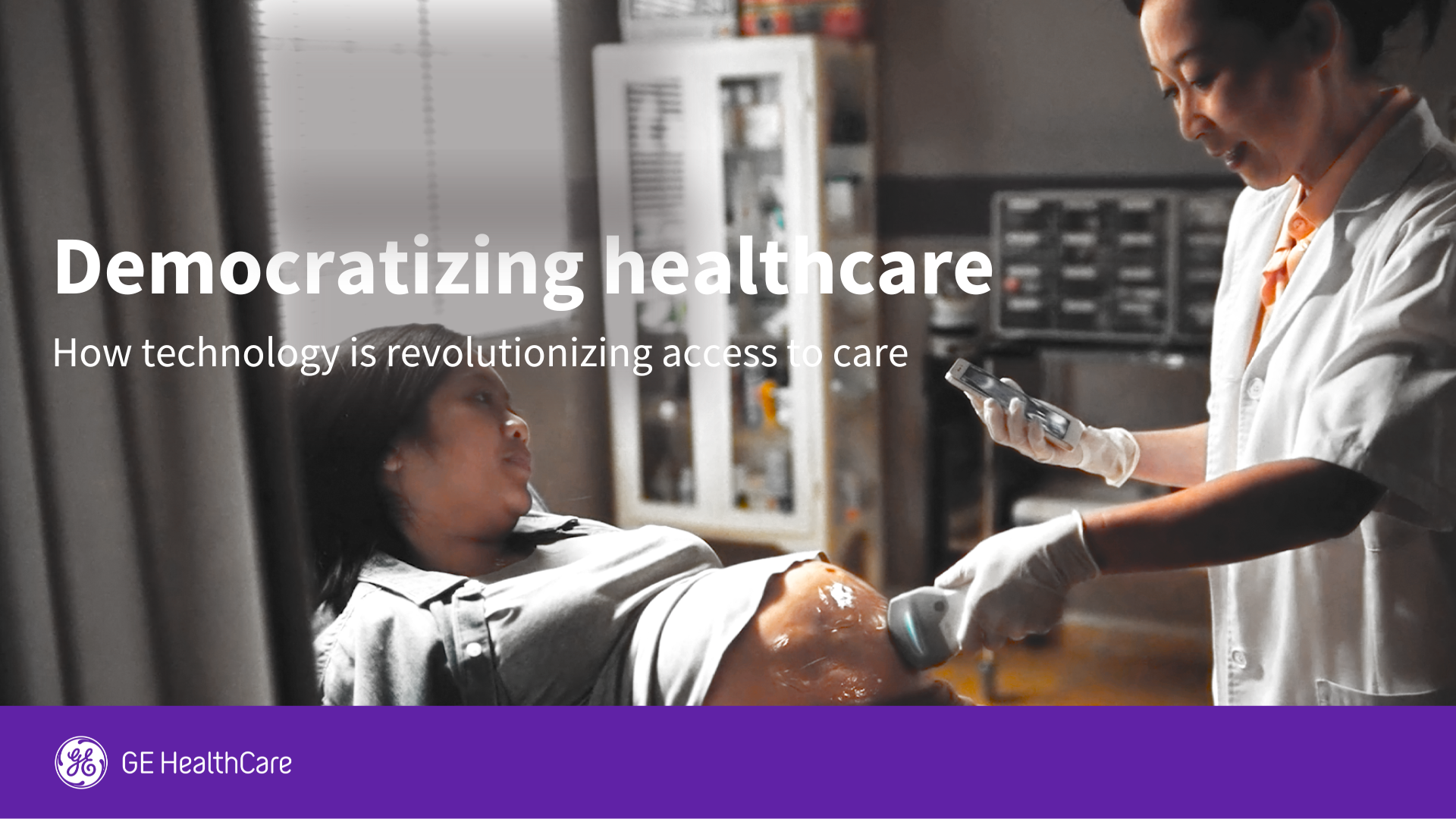By Vaishali Kamat, General Manager of New Ventures, Ultrasound Digital Solutions at GE HealthCare
This article first appeared on Vaishali's LinkedIn
Almost every industry has adopted artificial intelligence (AI), the technology that solves problems and carries out tasks by simulating human intelligence. Algorithms now power robots working the assembly lines at electronics manufacturers and automakers. Banks harness AI to better predict lending risks in mortgage applications. All ride-hailing and food delivery apps rely on this technology to optimize journey times.
The healthcare industry has also embraced the technology, with the typical modern hospital using several forms of AI-enhanced devices and solutions. From simple tasks like generating a report to complex surgical planning, AI is playing a role in simplifying workflow and improving efficiency. Busy nurses in the emergency room can tap into cloud-based virtual assistant technology to alleviate their administrative workload and free up their attention for patient care. Magnetic resonance imaging (MRI) scanners equipped with advanced deep learning reconstruction algorithms enable radiologists to achieve pin-sharp images quicker.
As these AI-based solutions proliferate in our industry, they are also advancing something remarkable: the democratization of healthcare. Whether in a private facility in North America or a rural area in a developing country, algorithms are boosting patient access to precise diagnoses and sophisticated treatment. The ability of algorithms to generate real-time insights from the mountains of data generated by medical devices, and tap into years of clinical research has the potential to further level the playing field, allowing patients, no matter where they are, to access state of the art treatments and more personalized care.
AI-enabled technology can crunch large amounts of data at the site of care, which clinicians can access with something as simple as a mobile phone. They can, thereby, obtain insights, recommendations, and automatic detection while they are with the patient. This means any clinician anywhere in the world could benefit from research and knowledge generated across different countries, and help them identify timely, personal care for their patient. This could not only improve care and patient satisfaction, but also help to reduce treatment costs for both patients and healthcare systems.
Can AI and the cloud improve access to healthcare?
New applications of AI technology are enhancing clinician capability and efficiency. This, combined with high-speed cloud connectivity, can break down the traditional boundaries in healthcare, starting with geographical ones. Advances in telemedicine solutions, cloud-based data aggregation, and AI-enabled connected devices will help address the world’s “care deserts” problem. Patients would be able to receive care from physicians without having to travel long distances. For example, expert Chinese doctors working out of hospitals in big cities are leveraging cloud computing and AI-enhanced electrocardiograms (ECGs) that allow them to offer fast, accurate diagnosis of the heart conditions of frail patients in rural clinics. Remote connectivity will also enable radiologists to work quickly and collaborate with colleagues on the other side of the world.
Breaking down healthcare barriers with ultrasound
In the past decade, advancements in ultrasound signal processing technology, which allow for the packing of the core functionality of a console-size machine into a handheld ultrasound device the size of an average smartphone, have expanded access to this imaging technology. Low-cost portable ultrasound has the potential to enhance access to healthcare and bring it closer to the patient — for example, primary care physicians can quickly assess a patient with a compact, ergonomic device that is ever-ready in their coat pocket, and be able to offer a diagnosis, without having to send the patient to an imaging center or hospital.
Enhancing these point-of-care and handheld ultrasound devices with AI allows a broader range of healthcare practitioners to leave the four walls of a hospital or clinic without compromising on image quality or diagnostic confidence. For example, algorithms can analyze images at the point of care and automatically calculate important parameters such as ejection fraction, which is the medical term for how much blood the heart’s left ventricle pumps. This information obtained via an AI-enhanced ultrasound device can assist a broader spectrum of clinicians in making a rapid diagnosis at the point of care, without needing to wait for an expert.
More recently, point-of-care ultrasound device scan guidance technology may help accelerate the democratization of healthcare. Ultrasound is a simple, cost-effective, portable diagnostic technology, but it still requires training for effective use; scanning requires skill and practice to ensure the correct image is captured and interpreted. AI-enabled scan guidance can help a wide range of medical professionals obtain diagnostic-quality ultrasound scans. In some cases, the ultrasound system can also assist with interpreting the images or relay them to the appropriate clinical expert to determine next steps.
The net result is non-ultrasound experts obtaining excellent images, gleaning valuable clinical insights, and being able to make faster confident diagnoses. It empowers all clinicians, whether they’re midwives scanning pregnant women in their houses, traveling doctors obtaining images of the lungs during a pandemic, or paramedics attending to suspected heart attacks in rural areas. It helps patients access timely care, closer to where they are. Moreover, enabling a wider range of medical professionals to conduct quality ultrasound scans at the point of care can help with early disease detection, reduce the burden on overloaded sonographers, and improve workflow in emergency departments and hospitals.
I am truly excited by what we are seeing in these last few years with the emergence of AI in healthcare because it opens the possibilities to bring quality healthcare to more people around the world. There is tremendous potential for this type of technology to change the way healthcare is delivered as well as the way in which people consume healthcare. In the case of ultrasound, this technology can help make very sorely needed imaging capabilities available to all clinics, whether they’re a state-of-the-art urban facility or a community health center.
I’m confident that further advancements in AI will soon help a woman in rural Africa access quality healthcare as easily as I do, right here in Boston. We’re watching democratization in action.


